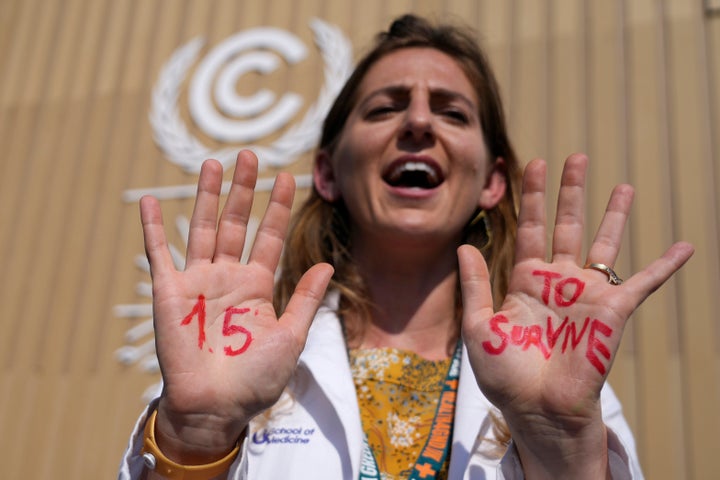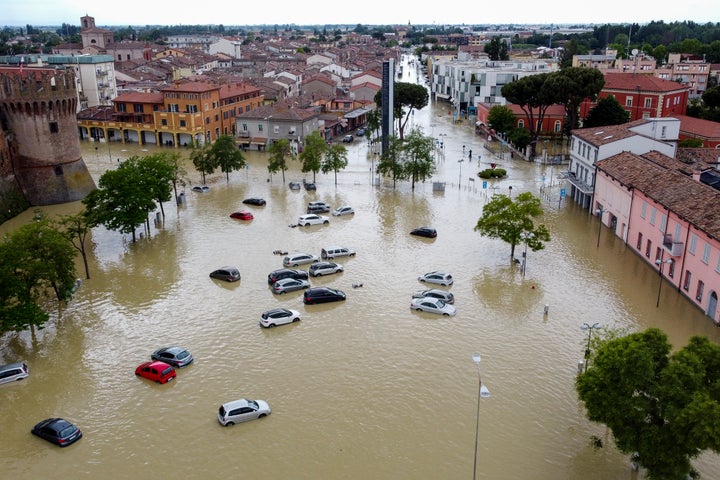It can be easy to overlook what is happening to our climate within the news cycle, especially as crises like the war in Ukraine and the climbing cost of living continue to be a major concern.
But, as we know, our planet is only getting hotter – and we are all going to be affected by future changes to our weather.
So here are four stories about the climate crisis which might have slipped under your radar this week.
1. We might be closer to a global increase in 1.5C than we thought
Scientists have just predicted that there’s a 66% chance we will break our temperature threshold of 1.5C by 2027.
The scientific community have long warned that if the Earth heats up beyond a global average of 1.5C compared to the temperatures we had during the pre-industrial era (1850-1900), then the change could be irreversible.
That’s why world leaders signed the Paris Agreement in 2015 to reduce carbon emissions and try and prevent further weather changes such as longer heatwaves, more severe storms and wildfires.
But, ongoing emissions and a change in weather patterns (called El Nino, where Pacific Ocean waters get warmer) means this summer might accelerate our global journey towards this dreaded increase.
The El Nino “will combine with human-induced climate change to push global temperatures into uncharted territory”, said World Meteorological Organisation’s secretary-general Petteri Taalas in a press statement.
Professor Adam Scaife, who leads up long range forecasts at the Met Office, said: “We really are now within reach of a temporary exceedance of 1.5C for the annual mean temperature, and that’s the first time in human history we’ve been that close.”

2. Amazon deforestation seems to have slightly slowed
So far in 2023, deforestation rates in the Brazil’s portion of the Amazon rainforest has reduced by 40% compared to the same time frame in 2022.
That’s according to Brazil’s government data, run by president Luiz Inacio Lula da Silva, who pledged to reduce deforestation before getting into office in January.
If we just look at April, deforestation was down 68% from 2022.
Obviously, that means some deforestation is still happening – but, rather than the 175 square miles cut down last April, it’s fallen to 127 square miles.
It’s not clear if this will continue throughout the rest of the year especially as deforestation increases in summer (the dry season).
And, as conservative manager at WWF-Brazil Mariana Napolitano explained: “We received the April figures as a positive sign, but unfortunately we still cannot declare a downward trend in deforestation in the Amazon. The numbers are at a very high level.”

3. We can cut plastic pollution by 80% by 2040
The United Nations Environment Programme thinks that countries might be able to reduce their plastic pollution by 80% in less than two decades.
As global production of plastic is set to triple its current rates by 2060 at the current rates, it’s pretty clear that change needs to follow, as soon as possible.
Reusing plastics would have the largest impact, and would reduce plastic pollution by 30% by 2040, while recycling would reduce our overall use of the material by 20%.
If we reconsidered alternative materials for single-use products, it would be further reduced by 17%.
If we pushed this overall reducing in plastic pollution to 80% – which the UN thinks is possible to do – we would save 0.5 billion tons of carbon pollution per year, according to the report, released on Tuesday.

4. Italy faces more extreme weather
This week, Italy has faced extreme flooding across the country after months of storms, avalanches, floods and droughts.
At least nine people died in the last week in the northern region of Emilia-Romagna after some areas received half their average annual rainfall across 36 hours.
There was more tragedy last year too, as 12 people died on the southern island of Ischia in a landslide while 11 people were killed last September in flash floods in March. An ice avalanche in the Italian Alps also killed 11 people last July, after a heatwave exacerbated by the worst drought seen in the country for seven decades.
The peninsula country is particularly prone to extreme weather because of its landscape, and because of its exposure to the warming seas on three sides of the country.
Ministers have acknowledged that climate change has had a profound impact on the country, and published Italy’s first National Plan for Adaptation to Climate Change last December.
As an expert at the Italian Society of Environmental Geology, Paola Pino d’Astore, told Reuters: “Climate change is here and we are living the consequences. It isn’t some remote prospect, it is the new normal.”
According to Italy’s national civil protection agency, 94% of its municipalities are prone to natural disasters.


